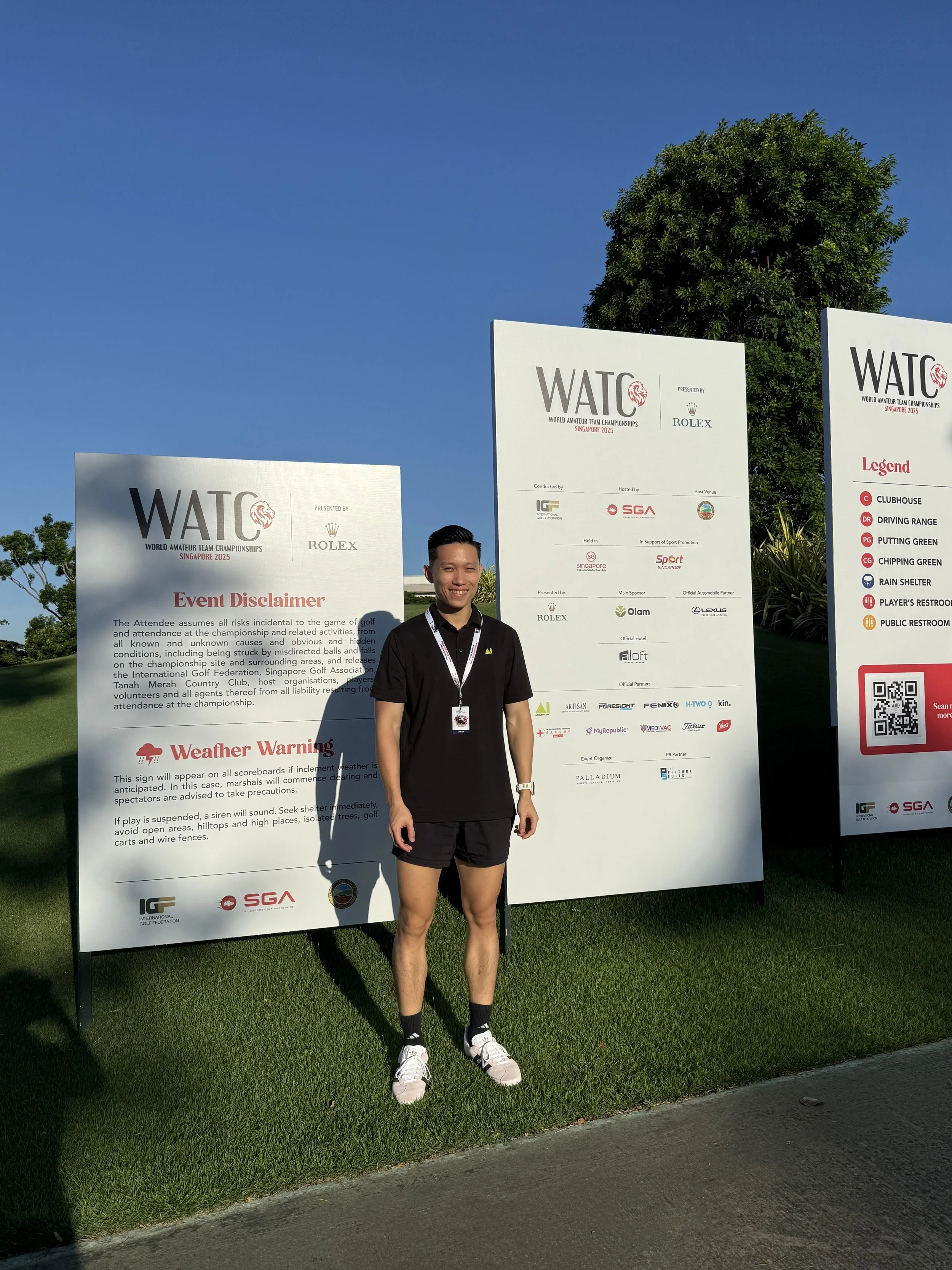The Rotational Pattern: What 280+ Physio Consults at the World Amateur Team Championship Reveal About the Golfer's Body
From Data to Diagnostics
At the World Amateur Team Championship (WATC) 2025, our physio room had over 280 athletes. As a Physiotherapist and golfer of more than a decade, it was not surprising that there was a recurring pattern of symptoms: a clear rotational signature in the complaints of right-handed golfers.
The most common sequence of issues we recorded was:
Right-sided Low Back Pain (the site of compression/symptom)
Left Hip Tightness (the limiting factor in the backswing)
Left Scapula and Neck Pain (the compensation point at the top of the swing)
This isn't random. It’s the physical manifestation of inefficiencies in the golf swing. Let me explain why.
The Spinal Epidemic: Understanding the Right Low Back
While the overall majority concerns were back-related (with over 165 combined mentions), the nuance lies in the right low back.
For the right-handed golfer, the lumbar spine undergoes a quick transition from left side bending to right side bending while rotating, creating a compression point at the right lumbar spine during the powerful downswing and follow-through. When the hips and thoracic spine lack rotation, the low back is forced to compensate by generating more power, leading to symptoms like right Quadratus Lumborum (QL) or Erector Spinae (ES) tightness/strain.
Our data confirms: The cornerstone of an efficient swing lies in a robust right low back.
The Kinematic Blockade: L Hip and L Scapula
The symptoms we noticed on the opposite side, the left hip and left scapula/neck, are the key diagnostic findings:
Left Hip Tightness: The lead hip (left for a righty) needs internal rotation during the follow-through to absorb the rotational forces. More importantly, it requires external rotation during the backswing to allow a full, unrestricted turn. When the left hip is tight, it acts as a block, forcing the body to find rotation higher up.
Left Scapula/Neck Compensation: When the low back and hips are restricted, the body uses the left upper trap/periscapular muscles to try and complete the backswing turn, often presenting as strain or general stiffness. This area becomes the "relief valve" for a body that can't rotate effectively from the core.
The Physio/Performance Coach's Prescription
As a TPI Level 2 Medical and ASCA certified professional, my focus shifts from the site of pain to restoring the chain of motion. These athletes didn’t just need recovery; they needed targeted performance work for longevity in the game.
To address the right low back, left hip, left scapula pattern, our S&C programming focuses on three key areas:
Lead Hip Mobility: Exercises like 90/90 internal/external rotations and hip airplanes to specifically unlock the L hip's range of motion, allowing for a deeper, safer backswing.
Thoracic Spine Rotation: Mobilisation of the mid-back (thoracic spine) to take rotational stress away from the lumbar spine.
Rotational Core Stability: Using exercises like pallof presses and half-kneeling chops to train the core to stabilise and transfer power efficiently, protecting the low back from excessive shear forces.




Turning Symptoms into Strengths
The WATC 2025 observations provide a valuable blueprint for any serious golfer. The injuries we treated were not accidents; they were predictable outcomes of a restricted golf body. By combining physiotherapy to treat the symptoms and specialised strength and conditioning to fix the root cause, we ensure athletes can maintain performance and durability over a long season.
MEET THE AUTHOR
YU HENG CHIN
Physiotherapist & Performance Coach
SPECIALISATIONS
Sports Physiotherapy
Musculoskeletal & Post-operative Rehabilitation
Chronic Pain & Injury Prevention
TPI Certified Golf Screening & Performance Optimisation
Youth Strength & Conditioning
Personal Training
Sports Massage, Dry Needling, Shockwave Therapy


